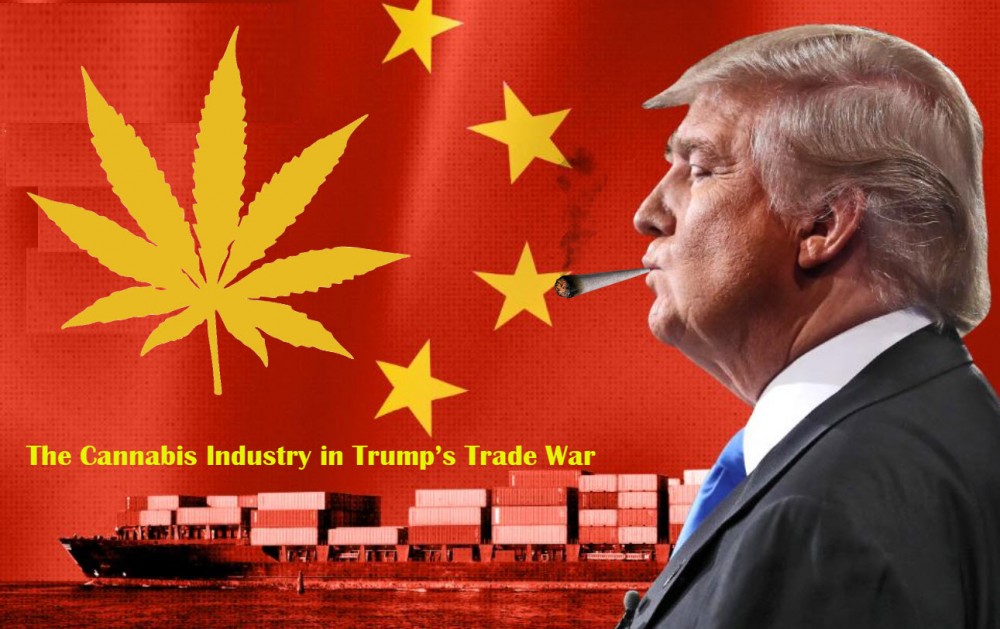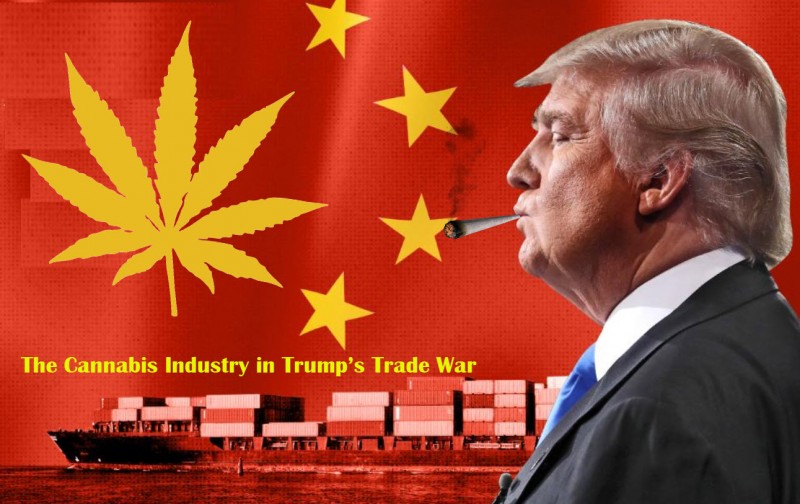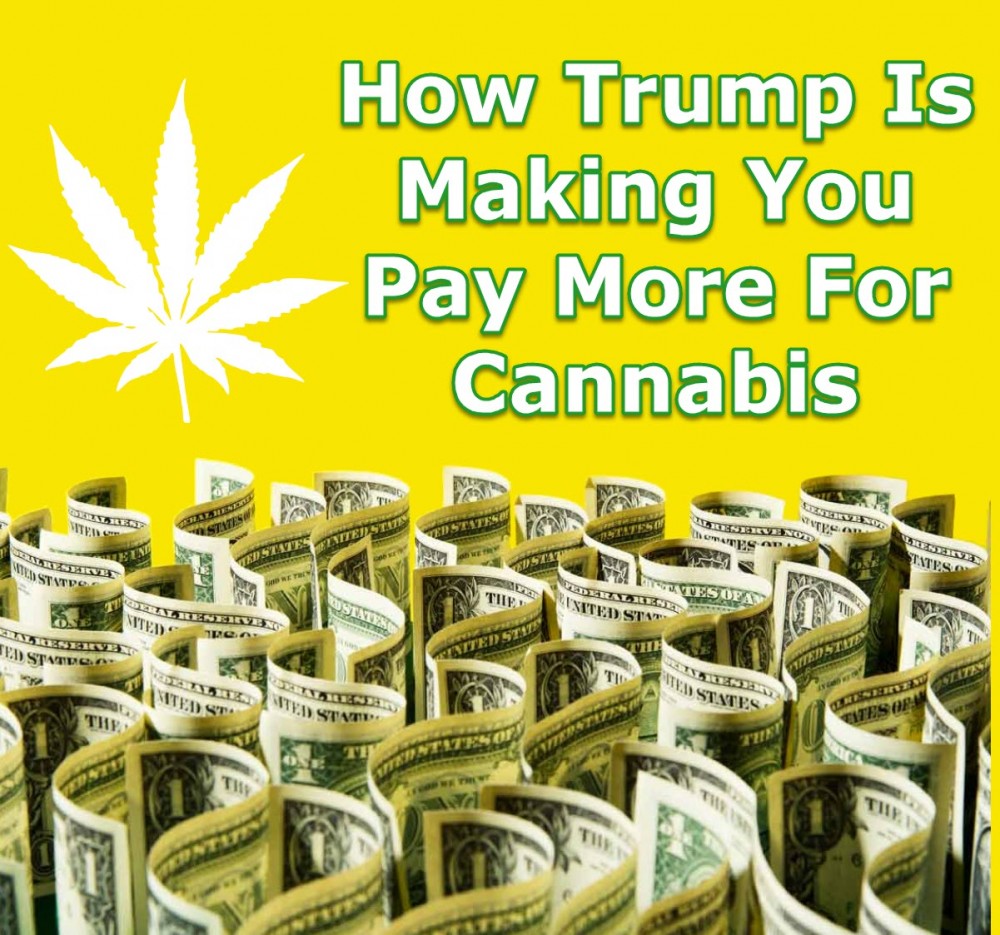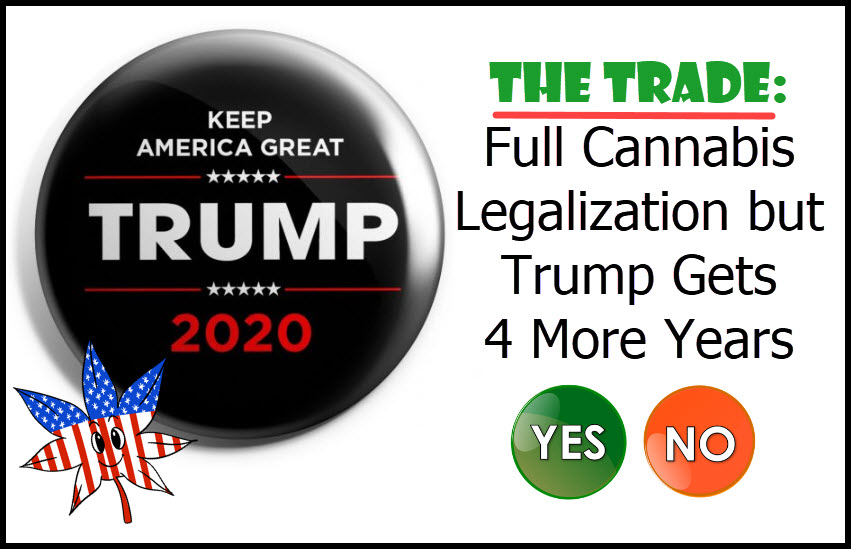The Cannabis Industry in Trump’s Trade War

The US-China trade war hangs heavy over the economy right now, with effects ranging from investors simply hanging on to their money and waiting for things to stabilize, to very real tariffs that businesses are either absorbing or passing on to the end consumer. Unlike trade wars and embargos of yore, a scuffle with China today affects almost every industry’s supply chain, seeing that the former communist republic manufactures x% of the world’s goods. Yes, Chinese workers are paid less than those in first-world countries, but that alone doesn’t explain its edge over other labor-rich developing nations. The reason half the goods in the world are now “Made in China” lies in the ready accessibility of raw materials and components—simply no country approaches the scale of China’s materials ecosystem.
So how is this all affecting the marijuana industry? Many eyes are on the nascent cannabis sector to observe how it will be affected by the standoff between the two nations. Let’s take a look at several visible outcomes so far that are affecting businesses, consumers, and surprisingly, farmers:
- HIGHER CAPITAL COSTS FOR GROWERS. On the growing side, supplies and equipment are some of the major items affected by tariffs. Most US-branded indoor lighting systems (both high-pressure sodium and the increasingly popular LED), are made in China. Steel fabrication material for greenhouses is likewise affected. For small and large growers, there is a definite increase in costs and some may shelve expansion plans in the meantime. Consumers can be affected marginally, though, as these costs are spread out or depreciated over time, often several years.
- PROCESSING EQUIPMENT INCREASES. For processors, equipment and components for extraction, ventilation, and others are also taking a hit, whether in the form of finished products of because they use Chinese steel or glass. As with growing supplies, these items are replaced over months or years, and will affect capital outlays but not so directly end-prices for consumers.
- ACCESSORIES MARGINS FURTHER SHRINKING. Importers of cannabis accessories such as vapes (and their batteries), which are almost entirely sourced from China, have been already been feeling the effects of a 25% tariff imposed in 2018. As margins are slim in this category to begin with, additional costs have been largely passed on to the consumer. It’s also not difficult to imagine how this can also result in the proliferation of lower quality vapes, which may lead to together regulations around vaping.
- MORE EXPENSIVE PACKAGING. Packaging companies in China have for years been employing full-time English speaking representatives and graphic designers, making it cost-effective for even tiny, one-man companies to outsource relatively small runs of packaging production to China. The tariffs in place have negatively affected this portion of the supply chain. It is easy to shift labels and sticker printing to US suppliers; custom molded packaging, not so much.
- PROLIFERATION OF TRANSSHIPPED OR MISDECLARED GOODS. Chinese manufacturers are themselves scrambling to find alternative ways to serve their American clients, and have begun offering tariff-free prices by transshipping items. This means that they are attempting to hide the original country of origin by sending products to countries like Vietnam and Taiwan, then exporting them into the US without the “China tariff”. The Customs department is fully expecting these false declarations to be rife across all industries, thus cannabis companies need to be wary about protecting their margins at the expense of their freedom (getting caught can lead to a couple of decades in jail).
- AGRICULTURAL CONVERSION TO HEMP. An unexpected benefit to the industry unfolded as soy, corn, and wheat farmers lost their Chinese market: namely, the agricultural sector is seeing higher acceptance of hemp (grown for CBD) as a profitable alternative crop. The trade war has been seeing more and more farmers taking a gamble on hemp, with an increase of 400% in terms of acres planted, according to the USDA.
Smaller businesses claim that the trade war is gnawing into their already-narrow margins, leaving larger companies to ride the higher costs and general uncertainty out. Consolidation and partnerships with large players, from the tobacco or pharmaceutical industries for instance, will continue. Smaller, leaner firms will need to be adaptable in the coming months.
As another recession looms, long-standing claims that cannabis demand is inelastic (or unaffected by economic highs and lows). After all, just as this is not your grandpa’s trade war, the cannabis industry does not even remotely resemble what it was just 10 years ago. It’s a wait-and-see for many investors, and businesses are indeed buckling up in their own ways, but one thing is for sure: the guy lining up at the dispensary will inevitably feel the pinch.
TRUMP ON CANNABIS? READ THESE...
HOW TRUMP IS COSTING YOU ON WEED PRICES, CLICK HERE.
OR..
WILL TRUMP KILL MEDICAL MARIJUANA, CLICK HERE.
OR..
TRUMP ON WINNING IN 2020 AND MARIJUANA, CLICK HERE.









